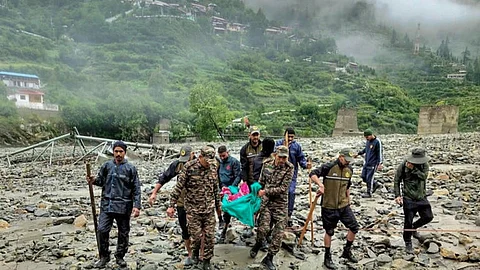
- Home
- Live Blog
- Breaking News
- Top Headlines
- Cities
- NE News
- Sentinel Media
- Sports
- Education
- Jobs

Unchecked development turning Himalayas into death traps, warn experts
The recent tragedy in Uttarkashi, where cloudburst-triggered landslides and flash floods killed at least four people and left over 50 missing, is the latest in a long and devastating pattern of disasters sweeping through India’s fragile hill states.
Though labelled as "natural calamities," experts say these disasters are largely man-made, driven by an alarming mix of rampant construction, deforestation, tunnel blasting, riverbed encroachment, and poor planning in geologically vulnerable zones.
Hills hollowed out in the name of development
In the name of development, both private and government-led infrastructure projects have hollowed out large swathes of the Himalayan terrain. Roads, tunnels, hydroelectric projects, railways, and commercial lodges are being built at breakneck speed, often ignoring ecological concerns. This aggressive activity has destabilised the topsoil, made slopes more prone to failure, and weakened natural drainage systems.
"The Himalayas are young and geologically fragile," says a leading geologist. "Blasting and deep drilling make them even more unstable."
The real cost of corruption and neglect
Experts and climate activists are calling for urgent policy changes. “This is a deadly cocktail of corruption, ignorance, and ecological apathy,” says Harjeet Singh of the Satat Sampada Climate Foundation. “This loss must be our final wake-up call.”
But with governments slow to act and warnings repeatedly ignored, India's hill regions remain exposed to further devastation — ticking time bombs that could explode with the next heavy rainfall or earthquake.
Until the alarms are truly heeded, the human and environmental cost will only climb.